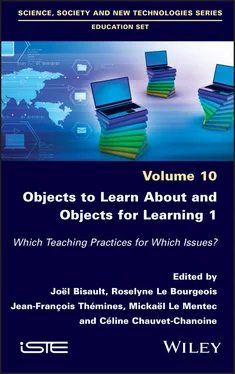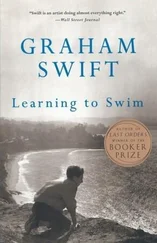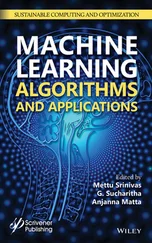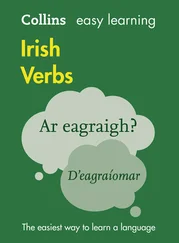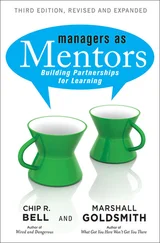Part 1 of Volume 2 – Objects and Representations of Space and Time
Space and time, brought together in Part 1 of Volume 2, may suggest a familiar disciplinary split, illustrated by geography and history. This is not the case, however, even if, because of the groupings made during the compilation of the work, objects to learn about/objects for learning in geography are placed together here.
Regarding space, the issue discussed in Chapters 1, 3and 5is how objects to learn about make it possible to learn, not so much about geography itself or during geography lessons but, more broadly, about space. Learning about space means articulating through the medium of school objects – wall maps (Xavier Leroux in Chapter 1), “paper” maps and sketches (Sylvie Considerère, Anne Glaudel, Maud Verherve and Mikaël Glaudel in Chapter 3) – or non-school objects – tactile interactive maps ( Chapter 5) of images and relevant information in an egocentric spatial frame of reference (oneself, here, at this moment) with relevant images and information in an allocentric spatial frame of reference, for example, a universal system of geographic coordinates. Object systems are thus required to support sensory, emotional, linguistic and cognitive articulations, which are not simple matters, in the standard situation of the geography class ( Chapters 1and 3) or during experiments conducted with visually impaired people ( Chapter 5). The common issue in the three propositions is perhaps to describe this change of status imprinted on the proposed objects which, from tools, must become objects – representations – in other words, discourses supported by a materiality that permits the sharing of knowledge.
This part allows us to ask whether it is easier to materialize space rather than time. Thus, Chapter 5seeks to further improve the multimodality (touching and verbal interactions) of objects that enable visually impaired people to find their bearings in space. Christine Croset, in Chapter 4, focuses on the difficulty of representing musical time: “A problem arises when we want to represent these dimensions: while a visual product (writing, drawing, photo) relies on spatial perception, oral flow (linguistic or musical content) must be reconstituted, which involves memory and attention. The perception of time thus requires more effort than that of space, which is instantaneous.”
This comment is all the more relevant since Chapters 2and 4, which deal with time, address the preschool teaching of pupils who cannot yet write; a level which takes us away from a strictly subject-related historical approach. The issue is to design the concept of time in young pupils, a specific sub-topic in French syllabuses and associated with space in a wider topic concerned with learning about and exploring the world. While maps or plans are traditional teaching aids in the geographical approach, only chronological timelines or calendars traditionally support these early learnings, time being so difficult to grasp no matter what the age of the learners. The calendar approach in a Greek nursery school (Maria Moumoulidou in Chapter 2) raises the question of the teaching aids used but above all of the objectives pursued, the learning approaches chosen. In a more unusual way, musical time makes it possible to work on another dimension of time as part of the child’s development in the framework of a pedagogy that embraces sensoriality ( Chapter 4). In fact, music, by definition, like the speech process, has to do with multiple temporalities (succession, rhythm, simultaneity, etc.). The writing of musical scores by young children, aged between 4 and 6 years old, in a Swiss school, was thus chosen to materialize the appropriation and characterization of segments of a song learned in class.
Part 2 of Volume 2 – Objects and Traces of the Activity
Part 2 of Volume 2 deals with various objects (assessments, technical objects, school objects) and their activation by subjects. The contributions in this part are based on a variety of theoretical and analytical frameworks, which do, however, have the common point of studying the way in which material or symbolic objects become usable objects as soon as they enter into a relationship with the user. The relationship between the subject and the object thus reveals unique experiences and activities, which differ according to the contexts studied, and these traces must be recorded. This part consists of three research reports and a testimony.
With regard to the research aspect, Sylvie Grubert Jost’s contribution ( Chapter 6) focuses on the practice of self-assessment of the skills expected in elementary school as a learning object and a shared responsibility between pupil and teacher. The author shows how assessment becomes a communication object as soon as it enters into a relationship with the subject who uses it. Communication between the teacher and the pupil around the practice of self-assessment then becomes a means of making the two parties jointly responsible for learning and for better perceiving each other’s expectations. The contribution of John Didier, Marion Botella, Rachel Attanasio and Marie-Dominique Lambert ( Chapter 7) analyzes the process of creation of a technical object by elementary school pupils, paying particular attention to the different stages that lead them to this creation, whether reflective, decisional or linked to action. The objective of this research is to analyze the process of transforming recycled materials to enable the creation of a sound garden and to analyze what the pupils take away from it in terms of learning throughout the process. Chapter 8, by Corinne Marlot, Christine Riat and Patrick Roy, examines the methods of entry into scientific culture for elementary cycle 1 pupils. More specifically, the authors analyze the conditions under which a school discipline object (in this case, a collective poster) can foster the institution of scientific practices in these pupils. The results show that scientific acculturation – as a means of learning about and understanding the world – involves thinking about the nature of the material, symbolic and language objects that can be mobilized, their relationship and also the way in which they should be introduced in order to engage pupils intellectually. This part concludes with the testimony of Irene Guevara, Iván Moreno-Llanos, Lucía Romero, Laura Zapardiel and Cintia Rodríguez (Chapter 9) who examine the self-regulatory practices of children below 3 years of age by analyzing their actions on objects and instruments around them. The authors show that children control their behavior and actions long before they have consolidated verbal language. Their actions on objects arise from understanding the phenomena but also from the solutions and strategies envisaged to understand what must be done and how. They also underline the role of the teacher and the challenges they impose on them to foster the development of the child.
Thus, these four contributions analyze the way in which material or symbolic objects enter into a relationship with subjects, their activation and what the subjects take away from them in terms of learning or development from the moment they think about them, handle them or transform them.
Part 3 of Volume 2 – Points of View on Objects and Perspectives
The last part is not, like the previous parts, composed of research texts and professional testimonies concerning a particular object. On the contrary, it brings together contributions addressing the topic of objects in teaching practices in a more global way. Based on his experience as a teacher and researcher, José Luis de los Reyes Leoz (Chapter 10) presents a resolutely cultural and emotive point of view on objects steeped in history kept in museums. The second point (Chapter 11) from the conference’s round table presents the points of view of four researchers (Mickaël Le Mentec, Anne-Laure Le Guern, Jean-François Thémines and Abdelkarim Zaid) on the place of objects in their journeys as researchers. In Chapter 12, Alain Panero puts forward a philosophical overview of all the texts in the book by considering the positions, often implicit, of the authors while sketching his own point of view, thus feeling an emotive experience that is a preliminary version of writing.
Читать дальше
